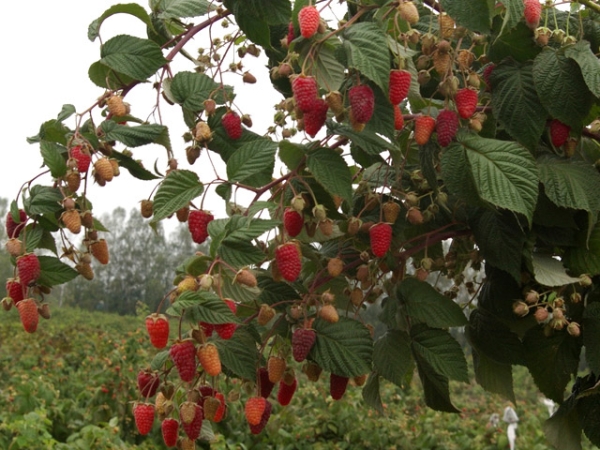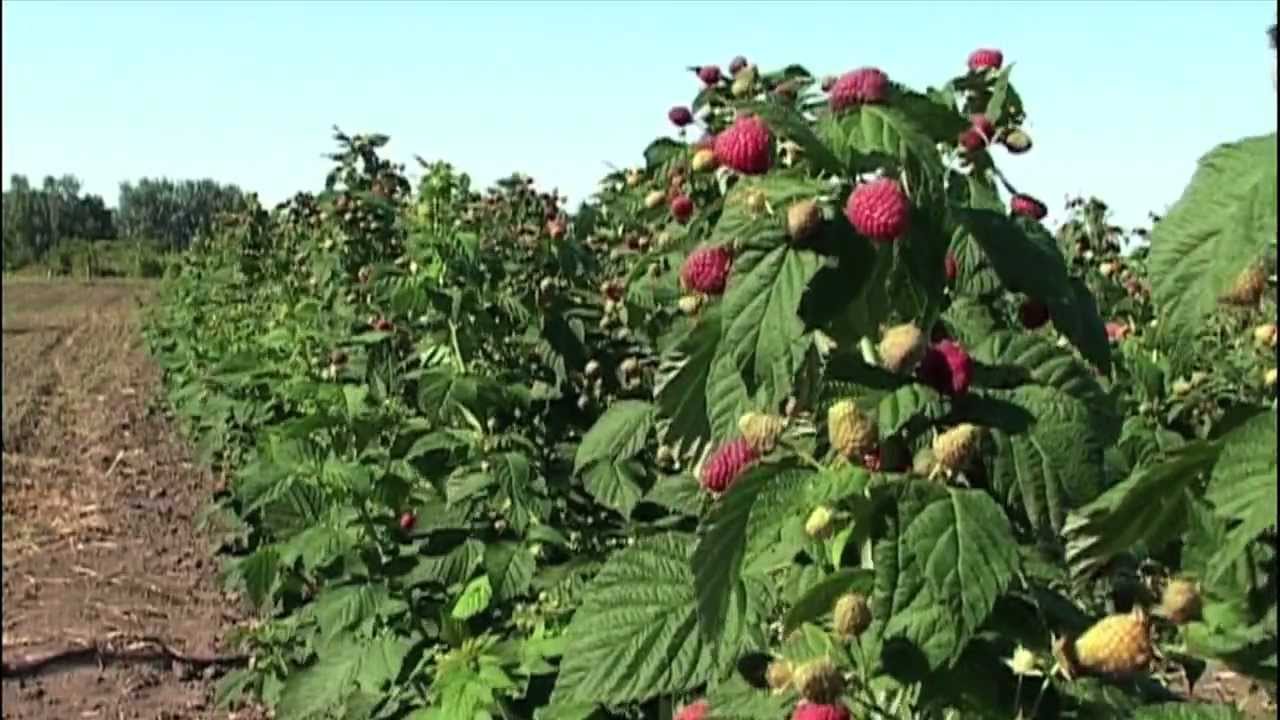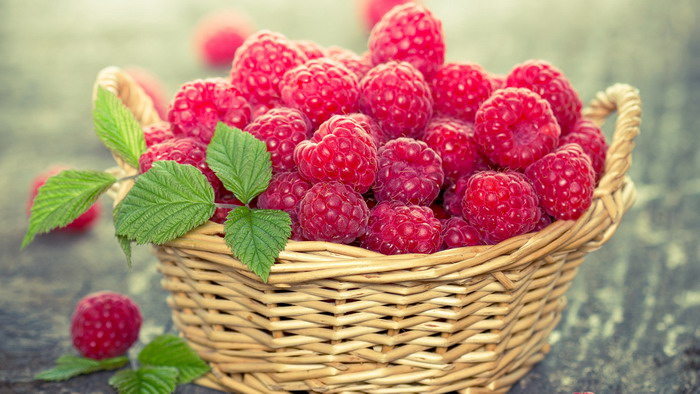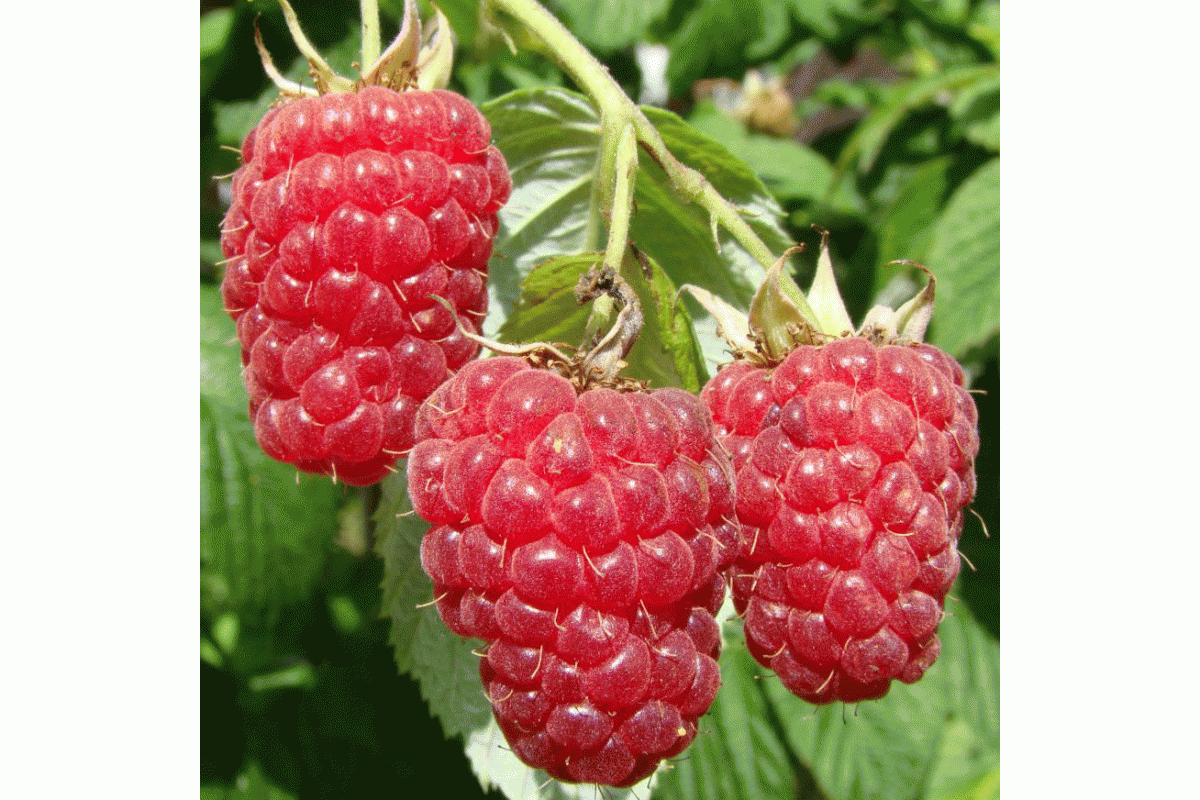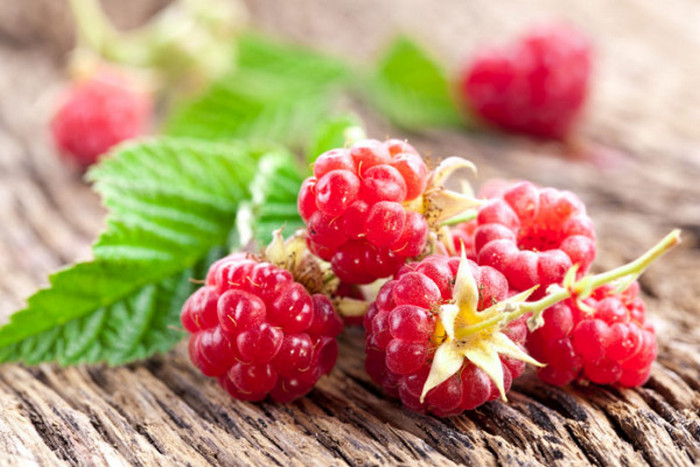Content:
Raspberry Terenty - This is a modern studless variety of domestic selection, resistant to major diseases. Obtained by crossing the varieties Patricia and Tarusa. It is characterized by the standard type of shoots and large-fruited. The bushes are not tall (1.2-1.5 m), with an optimal number of stems (up to 10 per bush).
Features:
Large-fruited raspberry Terenty is characterized by high productivity. One bush is capable of producing up to 10 kg of berries. To achieve these results, the care of the seedlings must be correct. With high-quality agrotechnical soil cultivation and abundant watering during the flowering period of the raspberry bush, you can harvest an excellent harvest of excellent quality.
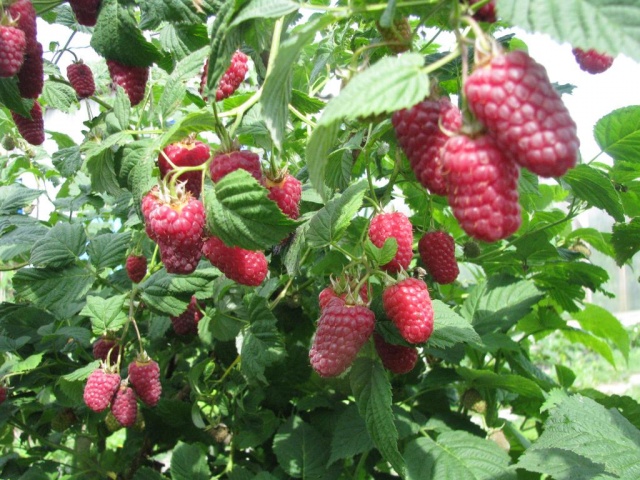
Thick and strong branches of the plant
Additional Information. Raspberry Terenty is considered the brainchild of a Russian breeder, Professor Viktor Valerianovich Kichina. Prior to that, he had already presented many other improved varieties to gardeners (Maroseyka, Malakhovka, Stolichnaya, Kirzhach, Shosha, Lazarevskaya, Mirage).
Purple red raspberry berries are cone-shaped, dense, do not crumble. When ripe, each of them can reach 10-15 g. The berries have high taste, pronounced aroma, and lend themselves well to transportation. Ripen in early July, fruiting continues for 3-4 weeks. On the bushes in rainy weather, the fruits turn sour and become moldy. Each berry is ideal for fresh consumption, providing a sweet and sour aftertaste. The fruits of the plant can be frozen or made from them home canned food (jam, preserves, jam, etc.).

The quality and size of Terenty raspberries depends on the growing conditions
The raspberry bush does not grow taller than 1.5 m, which greatly facilitates harvesting from it. The leaves of the plant are large, dark green, corrugated, pointed at the tips. The versatility of the fruit has been proven by many reviews. In the description of the terenty raspberry variety, it is noted that it is immune to four basic viruses, and is characterized by high winter hardiness.
To the main advantages of the variety malina Terenty can be attributed to the following criteria:
- excellent berry taste;
- high frost resistance;
- lack of thorns;
- large-fruited;
- transportability;
- weak reproduction by shoots;
- unpretentiousness;
- immune resistance to common viral, bacterial diseases.

Raspberry Terenty is best planted by the bush method
Plant care
Before planting raspberries, you need to choose a sunny plot of land with fertile soil in advance. For planting, select seedlings with 1-2 shoots and a powerful root system.
Information note. When planting raspberries, be vigilant, because this plant grows intensively and very quickly conquers new territories. This process is best kept under control.
Preparing the landing site
Varietal raspberry bushes love the sun. In shaded areas, fruits will be sour and plants will be weak. On one site, raspberries grow from 7 to 10 years, after the specified period, soil depletion occurs. Best precursors for raspberries:
- salad;
- cucumbers;
- beans;
- Vika;
- spinach;
- peas;
- rape;
- garlic;
- beet;
- radish;
- bow.
Loamy or sandy loam soil is the best option for growing raspberries. The depth of the groundwater must be more than 1.5 m, otherwise there is a high probability of root rot.If there are no such areas, you can plant bushes on high ridges.
Council. Experienced gardeners do not recommend planting Terenty raspberries after nightshade plants.
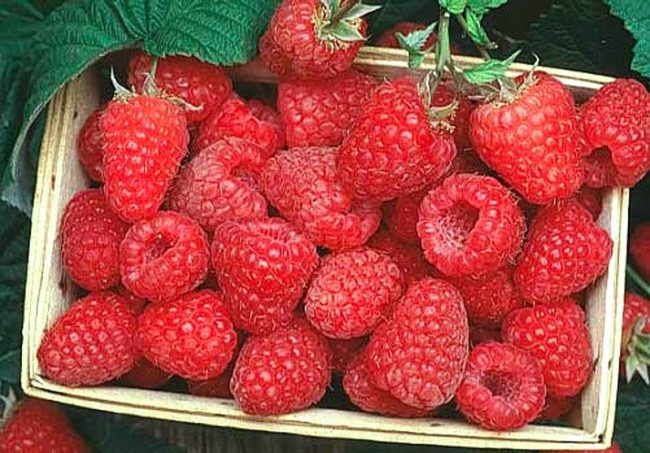
Sweet berry with a light aroma
Disembarkation procedure
Landing is carried out in the autumn or spring. The pit is prepared 10-14 days before planting the seedlings. It is better to buy seedlings from trusted sellers or nurseries. When buying a plant, you need to pay attention to the condition of the root system.
To plant Terenty's raspberries correctly, do the following:
- We dig a hole with a diameter of 40 cm and a depth of approximately 35 cm. This depth is necessary for the preparation of fertile soil;
- We fill it with humus, compost (50-100 g) and 1-2 tsp. complex fertilizer;
- We process the roots with a solution of clay and mullein. To improve plant survival, growth activators can be used;
- Cut the plant to a height of 30-40 cm;
- We place the plant in a hole (we deepen it no more than 15-20 cm), add earth and compact the soil;
- We water the soil abundantly with water;
- We mulch with non-acidic rotted manure or peat.
Note. Another type of planting raspberries can be digging a trench 30 cm deep and 60 cm wide. When planting several seedlings, the distance between them should be at least half a meter.
Plant care
With systematic plant care, its maximum yield is observed. Raspberry pruning is carried out twice a year: in spring and autumn. In the characteristics of the variety, it is noted that it does not tolerate drought well. During the fruiting period, complex fertilizers are applied to the soil. In autumn, the earth is dug up, fertilized with humus and ash. To prevent the development of mycoses in April, the plant is treated with Bordeaux mixture, and during the flowering period, bioactive preparations are used that protect the bushes from pests (mites, fungi, bacteria, etc.).
Timely pruning of shoots improves the quality and quantity of berries.
Extinct branches are cut in the spring. Up to 8 lateral shoots are left on each stem for fruiting. In the fall, two-year-old fruiting branches are cut. Weak, young shoots are also removed as they will not be able to overwinter. In order to prevent the spread of infections and parasites, the cut branches must be burned.
Shelter for the winter
Raspberries are not afraid of frost, but they do not tolerate thaws with subsequent frosts. The plant is able to withstand frosts of thirty degrees, at lower temperatures the branches should be hidden under the snow cover. In early autumn, raspberry shoots are bent to the ground. At a later time, the branches become gritty and lose their former plasticity. In the absence of snow, the bushes are covered with agrofibre.
The successful cultivation of raspberries depends on the correct choice of the site, pre-planting soil preparation, the illumination of the site, the timing and methods of planting, the quality of the planting material and the care of the plantings.
A characteristic feature of the Terenty variety is frost resistance, large-fruited and unpretentiousness. For the winter, varietal raspberries need to be cut and wrapped.
